Introduction
Depreciation scheduling is a cornerstone of sound financial management for businesses that own long-term assets. Whether it’s machinery in a factory, a delivery truck for a logistics company, or office furniture in a startup, the value of these assets decreases over time. A depreciation schedule provides a systematic way to record this decline, ensuring accurate financial statements, tax compliance, and strategic decision-making. In this detailed guide, we’ll unpack what depreciation scheduling is, why it matters, the methods involved, and the processes companies use to manage it effectively.
What Is Depreciation Scheduling?
Depreciation scheduling refers to the process of planning and recording the reduction in value of a fixed asset over its useful life. It’s not just a bookkeeping exercise—it’s a financial strategy that affects profits, taxes, and even business valuation.

Key elements include:
- Asset Details: Description, acquisition date, cost, and expected life.
- Depreciation Method: The accounting approach used to allocate cost (e.g., straight-line, declining balance).
- Timeline: A year-by-year or period-by-period breakdown of depreciation expense.
- Residual Value: The estimated value of the asset at the end of its useful life.
Example
Suppose a company purchases a delivery truck for $50,000 with an expected lifespan of 5 years and a residual value of $5,000. A depreciation schedule would outline how much expense is recognized each year under a chosen method, such as straight-line depreciation:
- Annual depreciation = ($50,000 – $5,000) ÷ 5 = $9,000/year.
Why Depreciation Scheduling Matters
1. Accurate Financial Reporting
Depreciation ensures that financial statements reflect the actual value of assets. Overstating asset value could mislead investors or stakeholders.
2. Tax Compliance
Tax authorities often require specific depreciation methods or schedules. For example, in the U.S., the IRS provides guidelines under the Modified Accelerated Cost Recovery System (MACRS).
3. Budgeting and Forecasting
Knowing when assets will need replacement helps businesses plan capital expenditures.
4. Performance Measurement
Spreading the cost of an asset over its useful life aligns expenses with the revenue the asset generates, giving a clearer picture of profitability.
Core Components of a Depreciation Schedule
Asset Identification
Every schedule starts with a list of fixed assets, including purchase dates, costs, and serial numbers. Many companies maintain an asset register—a centralized database for tracking assets.
Depreciation Methods
Different methods impact expense timing and financial ratios:
Straight-Line Method
- Equal expense each period.
- Simplest and most widely used.
Declining Balance Method
- Higher expense in early years, lower in later years.
- Useful for assets that lose value quickly, like electronics.
Sum-of-the-Years’-Digits (SYD)
- Accelerated method that applies decreasing fractions of cost.
Units of Production
- Depreciation based on usage, such as machine hours or units produced.
- Best for assets whose wear depends on activity, not time.
Creating a Depreciation Schedule: Step-by-Step
Step 1: Gather Asset Information
Collect details such as:
- Purchase price.
- Date of acquisition.
- Expected useful life.
- Residual value.
- Assigned depreciation method.
Step 2: Choose a Depreciation Method
Select the approach that aligns with accounting policies, tax regulations, and business realities.
Step 3: Calculate Depreciation Expense
Apply the chosen formula. For example, using straight-line: Depreciation Expense=Cost – Residual ValueUseful Life\text{Depreciation Expense} = \frac{\text{Cost – Residual Value}}{\text{Useful Life}}Depreciation Expense=Useful LifeCost – Residual Value
Step 4: Build the Schedule
Create a table listing each accounting period, beginning asset value, depreciation expense, accumulated depreciation, and ending book value.
Example Table (Straight-Line):
| Year | Beginning Book Value | Depreciation Expense | Accumulated Depreciation | Ending Book Value |
|---|---|---|---|---|
| 1 | $50,000 | $9,000 | $9,000 | $41,000 |
| 2 | $41,000 | $9,000 | $18,000 | $32,000 |
| 3 | $32,000 | $9,000 | $27,000 | $23,000 |
Step 5: Integrate with Accounting Software
Most businesses use tools like QuickBooks, NetSuite, or SAP to automate depreciation calculations and schedule updates.
Managing Depreciation Over Time
Regular Reviews
Review schedules annually to adjust for changes such as asset impairment or updated useful lives.
Handling Asset Disposals
When an asset is sold or scrapped, remove it from the schedule, record any gain or loss, and adjust accumulated depreciation.
Adjusting for Additions or Upgrades
Significant upgrades that extend an asset’s life may require revising its schedule.
Tools and Technologies for Depreciation Management
Accounting Software Features
Modern accounting platforms automate depreciation management:
- Automatic Calculations: Reduce errors in expense recognition.
- Asset Tracking: Link schedules to physical assets.
- Compliance Support: Built-in tax code rules for MACRS or IFRS.

Cloud-Based Asset Management Systems
Tools like Sage Fixed Assets or Asset Panda allow multi-location tracking, helpful for large organizations.
AI and Predictive Analytics
In 2025, AI-driven tools can analyze asset performance data to recommend optimal depreciation methods or flag potential impairments early.
Compliance with Accounting Standards
GAAP (Generally Accepted Accounting Principles)
Under GAAP, companies must choose methods that best reflect asset usage and disclose depreciation policies in financial statements.
IFRS (International Financial Reporting Standards)
IFRS requires reviewing residual values and useful lives annually, making depreciation scheduling a dynamic process.
Tax Regulations
Tax codes may differ from financial reporting standards. For instance, a business might use straight-line depreciation for GAAP but MACRS for tax reporting.
Common Challenges in Depreciation Scheduling
1. Large Asset Volumes
Enterprises managing thousands of assets risk errors without robust systems.
2. Mid-Life Adjustments
Changes in asset usage or technological obsolescence can make original schedules inaccurate.
3. Regulatory Changes
Tax authorities periodically update depreciation rules, requiring schedule revisions.
4. Cross-Border Complexities
Global companies must juggle varying local regulations and currencies.
Best Practices for Efficient Depreciation Management
Centralized Asset Register
Maintain a single source of truth for all assets to avoid duplication or missed entries.
Periodic Audits
Regularly audit schedules against actual asset condition and usage.
Staff Training
Ensure finance and operations teams understand depreciation policies and tools.
Automation Adoption
Invest in software that integrates depreciation with financial reporting and forecasting.
Advanced Depreciation Strategies
Component Depreciation
Under IFRS, companies can break complex assets into components and depreciate each separately. For example, an airline may depreciate an aircraft’s engines at a faster rate than the fuselage. This method provides a more accurate reflection of asset usage and value.
Accelerated Depreciation for Tax Benefits
Using methods like double-declining balance or MACRS allows businesses to deduct higher expenses earlier in an asset’s life. This front-loading can improve cash flow in the short term—useful for growing companies reinvesting in operations.
Deferred Tax Considerations
When tax depreciation differs from book depreciation, temporary differences arise, leading to deferred tax assets or liabilities. Managing these differences is critical for accurate financial planning.
Integration with ERP Systems
Streamlined Financial Workflows
Integrating depreciation scheduling with enterprise resource planning (ERP) systems such as SAP, Oracle NetSuite, or Microsoft Dynamics 365 ensures consistency across accounting, procurement, and operations.
Benefits of ERP Integration
- Automatic Updates: Asset purchases or disposals trigger depreciation schedule changes.
- Consolidated Reporting: Financial statements, budgets, and forecasts all draw from the same data.
- Audit Readiness: ERP systems maintain detailed audit trails for compliance.

Example Workflow
- Procurement: A new machine purchase is logged in the ERP.
- Asset Module: The asset is automatically added to the fixed asset register.
- Depreciation Engine: Based on the chosen method, depreciation entries are created monthly.
- Financial Reports: Depreciation expense flows into income statements and balance sheets.
Depreciation Scheduling in Different Industries
Manufacturing
Heavy machinery and equipment require careful scheduling to balance wear and tear with tax efficiency. Many manufacturers use units-of-production depreciation to align expense recognition with output.
Transportation and Logistics
Fleet vehicles depreciate quickly. Companies often adopt declining balance methods to match higher early-year maintenance and value loss.
Technology and SaaS Companies
Rapid obsolescence of servers or hardware leads to shorter useful lives. Cloud-based companies also track intangible assets like software licenses for amortization schedules.
Real Estate
Buildings typically follow straight-line depreciation over long periods, while land is non-depreciable. Property managers use schedules to forecast renovation budgets and evaluate ROI.
Case Study: Depreciation Scheduling Done Right
Company: A mid-sized construction firm with $50M in fixed assets.
Challenge: Manual spreadsheets caused errors in depreciation entries, leading to audit findings.
Solution: Implemented Sage Fixed Assets integrated with Oracle NetSuite ERP.
- Created a centralized asset register.
- Automated depreciation calculations under both GAAP and MACRS.
- Conducted quarterly audits using AI-driven anomaly detection.
Outcome: Reduced errors by 95%, saved 150 staff hours annually, and avoided compliance penalties.
Common Pitfalls and How to Avoid Them
- Inconsistent Useful Lives: Align estimates with industry benchmarks and periodically review them.
- Neglecting Residual Value Updates: Adjust salvage values as market conditions change.
- Overlooking Impairment Events: Test for impairment when market value drops sharply—e.g., during economic downturns.
- Improper Disposal Accounting: Always remove disposed assets from the schedule to avoid overstated depreciation expense.
Role of AI and Predictive Analytics in 2025
AI is transforming depreciation management:
- Predictive Maintenance Data: Sensor data from IoT devices informs updated useful life estimates.
- Automated Anomaly Detection: AI flags discrepancies in schedules or unexpected expense patterns.
- Scenario Planning: Predictive models simulate the financial impact of changing depreciation methods or replacing assets.
Example: A manufacturing plant integrates IoT data into an AI platform, which detects that certain machines are degrading faster than expected. Finance adjusts depreciation schedules accordingly, improving accuracy and budgeting.
Compliance and Auditing Considerations
Internal Controls
Establish clear policies for asset capitalization thresholds, review frequencies, and approval processes.
External Audits
Auditors often scrutinize depreciation schedules to verify:
- Consistency with accounting standards.
- Reasonableness of useful life estimates.
- Proper handling of disposals and impairments.
Documentation Best Practices
Maintain detailed records of purchase invoices, maintenance history, and valuation reports to support your depreciation calculations.
Strategic Use of Depreciation Data
Budgeting and Capital Planning
Analyzing schedules can reveal when large replacement investments will be needed, allowing businesses to plan cash flow proactively.
Performance Analysis
Comparing depreciation expense to revenue streams helps evaluate asset productivity. For example, if a machine’s depreciation cost outweighs its contribution to revenue, it may signal inefficiency.
Mergers and Acquisitions
Accurate schedules are vital during due diligence, affecting company valuation and negotiation terms.
Environmental and ESG Considerations
With sustainability becoming a priority, businesses are factoring environmental, social, and governance (ESG) concerns into depreciation decisions:
- Extending asset life through refurbishment reduces waste.
- Transparent schedules enhance ESG reporting credibility.
- Companies may depreciate green investments differently if incentivized by tax credits.
Future Trends in Depreciation Scheduling
Real-Time Depreciation
Integration with IoT and AI could allow near real-time depreciation adjustments based on asset condition.
Blockchain for Asset Tracking
Immutable ledgers could provide transparent, tamper-proof depreciation histories for regulatory compliance.
Greater Alignment with ESG Metrics
Future regulations may require companies to align depreciation policies with sustainability goals, e.g., reporting carbon impact alongside asset values.
Actionable Tips for Businesses
- Automate Early: Even small businesses benefit from dedicated depreciation software.
- Train Your Team: Ensure accounting staff understand both GAAP/IFRS rules and tax-specific methods.
- Review Annually: Update useful lives, residual values, and methods to reflect real-world changes.
- Leverage Analytics: Use predictive tools to align depreciation schedules with operational performance.
- Document Everything: Comprehensive records simplify audits and support accurate reporting.

Conclusion
Depreciation scheduling is far more than a compliance requirement—it’s a strategic tool for financial planning, tax efficiency, and operational insight. Businesses that invest in robust systems, regular reviews, and staff training can transform depreciation from a routine task into a competitive advantage. As technologies like AI, IoT, and blockchain mature, managing depreciation will become more dynamic, precise, and integrated with broader business strategies. Understanding and mastering depreciation scheduling today ensures your company remains agile, compliant, and prepared for the future.
FAQs
1. What is a depreciation schedule used for?
It’s used to track and allocate the cost of fixed assets over time for accurate accounting, tax compliance, and planning.
2. Can different methods be used for tax and financial reporting?
Yes. Companies often use one method for GAAP/IFRS reporting and another (like MACRS) for tax purposes.
3. How often should depreciation schedules be reviewed?
At least annually, or more frequently if there are major asset acquisitions, disposals, or market changes.
4. What happens if an asset becomes obsolete early?
The asset may need to be impaired or disposed of, and the schedule updated to reflect the loss.
5. Are intangible assets included in depreciation schedules?
No. Intangible assets like patents are amortized, not depreciated, though their schedules follow similar principles.
6. Which tools help manage depreciation scheduling?
Popular options include Sage Fixed Assets, QuickBooks, NetSuite, SAP, and AI-driven platforms for predictive analytics.

